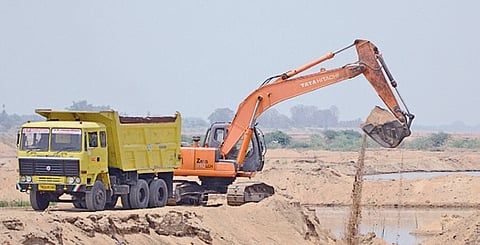

BENGALURU: While the construction industry is booming and prices for commercial and residential spaces are seeing an upward trend, availability of natural sand is fast becoming scarce, and might run out by 2050, suggest studies. This is not just a non-renewable resource problem, but also a climate change issue. The carbon dioxide emissions, especially from manufacturing cement or fired clay bricks, is increasing yearly.
To address this problem, researchers at the Centre for Sustainable Technologies (CST), IISc, are exploring ways to store carbon dioxide from industrial flue gas in excavated soil in Construction and Demolition (C&D) waste. These materials can then be used to partially replace natural sand. This would not only reduce the environmental impact of construction materials but also impart properties that can enhance their use for construction.
“Utilisation and sequestration of carbon dioxide can be a scalable and feasible technology for manufacturing low-carbon prefabricated building products while being aligned with the nation’s decarbonisation targets,” said Souradeep Gupta, Assistant Professor at CST.
About 150 million tonnes of C&D waste is generated annually in the country and only about one per cent of it is recycled. Researchers have shown that mixing natural sand with carbon dioxide, treated C&D waste, in a mortar, and then curing it (cooling, to harden it) in a controlled, carbon dioxide-rich environment, can speed up the development of the material’s engineering properties, and enhance its compressive strength by 20-22 per cent.
In a more recent study, the team explored the use of carbon dioxide in excavated soil to develop cement-lime-soil materials. “When you sequester carbon dioxide in cement-soil materials, tiny crystals of calcium carbonates are formed, which reduce the fraction of medium capillary pores, densify the interfacial zones, thus improve the compressive strength,” said Ashutosh Dwivedi, first author and PhD student at CST.